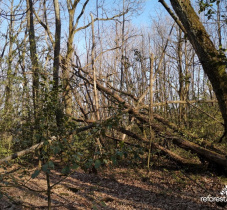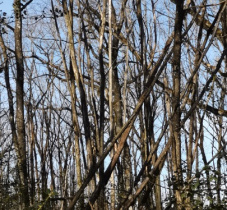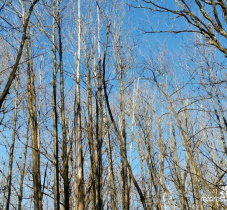Project description
Reforest'Action and its partner Sylvagri invite you to finance the revitalization of this neglected forest!
The project at a glance
- Number of trees to be planted: 7,010
- Plantation area: 4.5 hectares
- Species planted: sessile oak, Calabrian laricio pine
- Project type: reforestation of a poor and ill stand
- Planting season: Spring 2021
- Certification: PEFC
Context
This forest of 4.50 hectares is located in the Ain department, near the river of the same name. Lately, the stand was attacked by cynips and cankerworms. Cynipq, also called chalcids, lay their larvae in the trees’ buds. Over the spring, the larvae secrete toxins and cause the death of the affected specimens. Canker is a disease caused by a bacteria, that causes wood necrosis. The few hardwood trees that survived these attacked are not numerous enough to ensure the forest’s future. In that respect, the massif needs to be reforested.
The project plans on the planting diversified species, selected for their compatibility to the station’s climatic conditions. The natural regeneration of the chestnut trees, a species that particularly favours biodiversity, is preserved. Better adapted to climate change, this forest will last over time. In the long term, the trees will contribute to fight climate change thanks to carbon storage.







